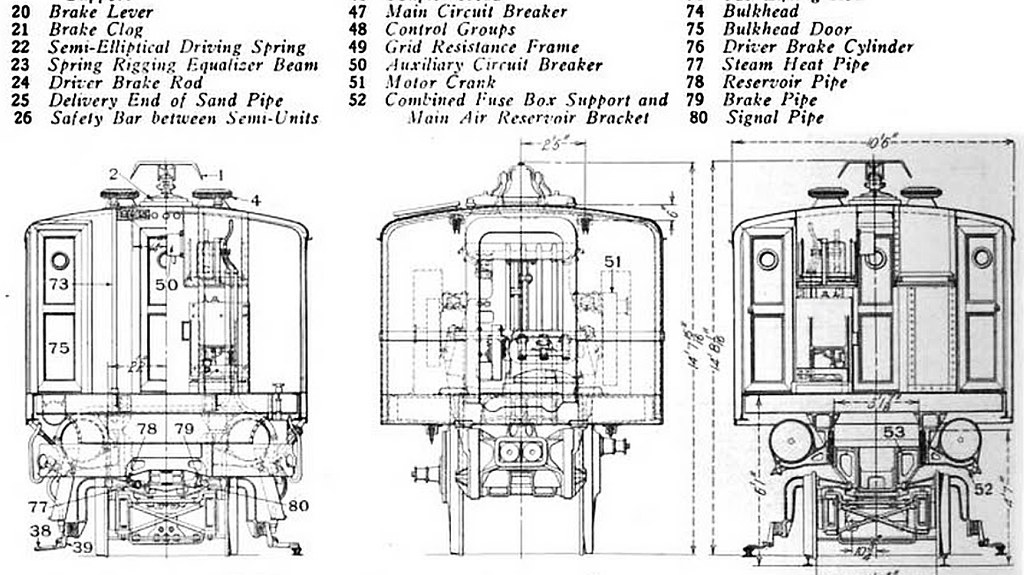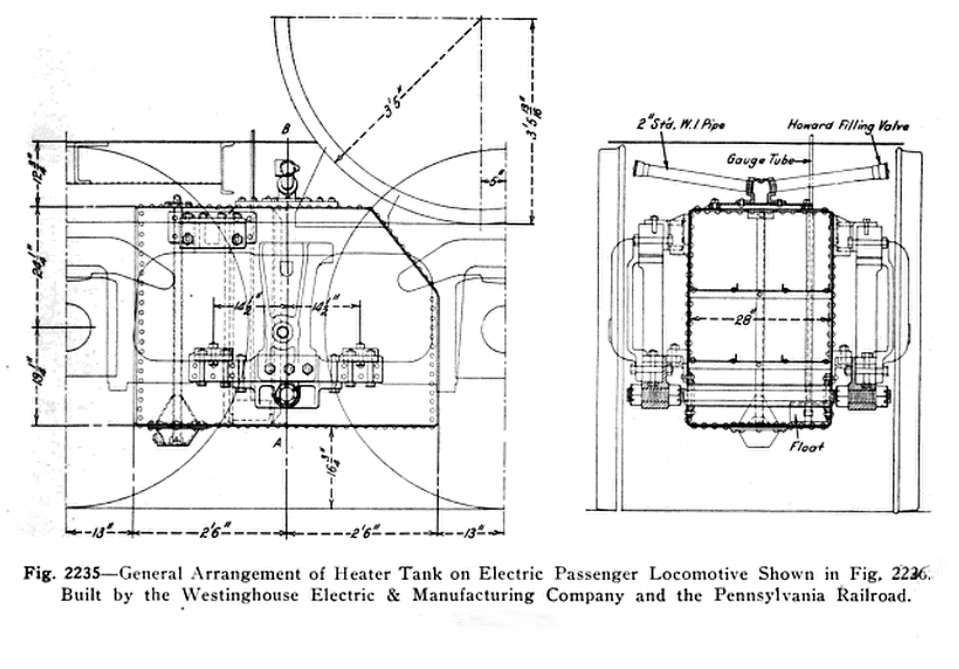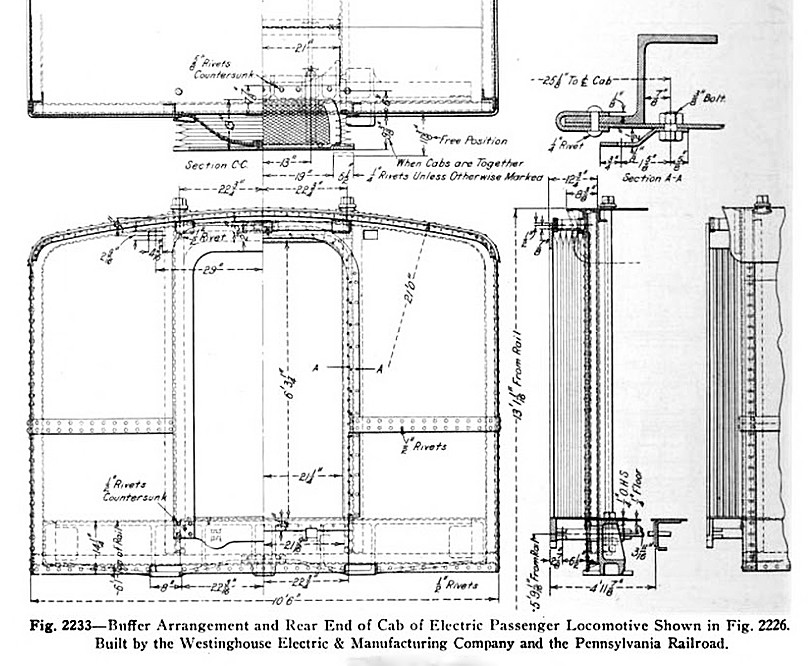Passenger expectations about heating and cooling were much lower in the 20’s & 30’s than they are today.
Out of a whim, I decided to have a look at my copy of Train Shed Cyclopedia No.15, Heavy Electric Traction 1922-1941.
The first section of the book are pages 905-943 from the 1922 Locomotive Cyclopedia. Pages 905-909 are devoted to drawings of the DD1. On page 906, the text for part label “77” for fig. 2229 reads “Steam Heat Pipe”. On page 909, The caption for fig 2235 reads “General Arrangement of Heater Tank on Electric Passenger Locomotive…”.
So it looks like the DD1’s were indeed equiped with steam generators.
As for the sand box opening covers - perky??? [:-^]
Update: The “Heater Tank” is shown to be 28" diameter and my estimate it is 44" high. A bit of math shows that’s close to 1,000lb of water, which would be good for a bit less than an hour of the GE flash boiler running at maximum output (1100 lb/hr).
Well that makes it definitive. Not that I ever doubted David Kleppers visual recollection.
Note that for North Americans the '22 Cyc is available as a free download from Google Books (and all of you should get and treasure a copy!)
I am on a wretched phone so can’t edit a proper link straight to the PDF download. Someone who can is encouraged to do so stat.
Excellent detective work, erikem!
https://books.google.com/books?id=oMY1AQAAMAAJ&pg=PA899&source=gbs_toc_r&cad=4#v=onepage&q&f=false
 DD1_section by Edmund, on Flickr
DD1_section by Edmund, on Flickr
I’m not exactly seeing a cylindrical tank. I see a rectangular water tank between the frame rails:
 DD1_section4 by Edmund, on Flickr
DD1_section4 by Edmund, on Flickr
It shows a float gauge with rod extending into the “cab” and a 2" fill pipe.
These drawings also show that I was wrong about the “safety valve pipes” as they are shown to be “Center Pins”. Would these be used to secure the carbody to the floor? (There is a forward pair just behind the cab partition).
 DD1_section2 by Edmund, on Flickr
DD1_section2 by Edmund, on Flickr
One item I don’t see detailed, unless I’m overlooking it, is the previously mentioned, cake-pan shaped covering on the roof. A hole is shown in the carbody but no explanation for it.
Ed,
The view of of the tank in the Train Shed Cyclopedia reprint wasn’t as clear as the scan of he original book that you linked. Looks like a couple of hours worth of water in the tank.
It’s been an interesting discussion for me as well, having remembered the GE Review article on train heating when reading your original post. Having never seen or had a chance to rdie behind a DD1, my knowledge comes solely from what I’ve read about them. My first introduction was from Middleton’s book on RR electrification and the DD1 stuck me as a really funky way of building an electric locomotive - though there were several good reasons that it was built the way it was.
I’m guessing that the DD1’s were delivered without any sort of steam supply, with the PRR thinking that preheating at Sunnyside along with the short run from Manhattan transfer wouldn’t require steam generators on the DD1’s. Experience probably showed that was a bad assumption.
- Erik
P.S. I had downloaded the scan of the 1922 Cyclopedia two years ago, bought the Train Shed Cyclopedia No.15 in either 1975 or 1976 from Cody’s Books in Bezerkeley.
P.P.S. Dave Klepper was pretty emphatic about some sort of heat source with the DD1 and that’s why I caveated my comments on the 1950’s Trains magazine article on the DD1.
And I wish to thank all for bringing facts to confirm my hazy memory of the LIRR of 70-80 years ago, Like replacing a hazy scratched B&W postcard with a full-color detailed photo of the same scene. Thanks.